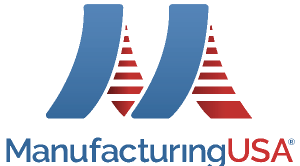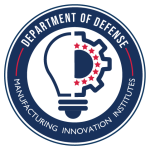

News
FDA Releases FAQs on 3D Printing of Medical Devices, Accessories, Components, and Parts During the COVID-19 Pandemic
March 26, 2020 | Categories: America Makes News, COVID19, Member News
Released by FDA March 26, 2020.
The FDA continues to take creative and flexible approaches to address access to critical medical products in response to COVID-19. During the COVID-19 pandemic, the need for certain medical devices, including personal protective equipment (PPE), may outpace the supply available to health care organizations because of the high demand and overall interruptions to the global supply chain. We recognize that the public may seek to use 3D printing to assist in meeting demand for certain products during the COVID-19 pandemic. As part of our effort to protect the public to the extent possible, we are including answers to frequently asked questions for entities who 3D print devices, accessories, components, and/or parts during the COVID-19 emergency.
Q. What are the FDA’s general recommendations for 3D printing medical devices?
A. The FDA has previously issued guidance on the Technical Considerations for Additive Manufactured Medical Devices. This guidance outlines the FDA’s recommendations for 3D-printed devices from the device stage to process validation and acceptance activities of finished devices.
Q. Can 3D printing be used to make gowns, masks, respirators, and other types of personal protective equipment (PPE)?
A. PPE includes protective clothing, gowns, gloves, face shields, goggles, face masks, and respirators or other equipment designed to protect the wearer from injury or the spread of infection or illness. While it is possible to use 3D printing to make certain PPE, there are technical challenges that have to be overcome to be effective enough. For example, 3D-printed PPE may provide a physical barrier, but 3D-printed PPE are unlikely to provide the same fluid barrier and air filtration protection as FDA-cleared surgical masks and N95 respirators. The CDC has recommendations for how to optimize the supply of face masks.
Q. Can I use PPE made by 3D printing?
A. 3D-printed PPE can be used to provide a physical barrier to the environment. However, 3D-printed PPE are unlikely to provide the same fluid barrier and air filtration protection as FDA-cleared surgical masks and N95 respirators. The CDC has recommendations for how to optimize the supply of face masks.
Q. Will 3D-printed masks provide the same fluid barrier protection and air filtration as FDA-cleared surgical masks and N95 respirators?
A. 3D-printed masks may look like conventional PPE. However, they may not provide the same level of barrier protection, fluid resistance, filtration, and infection control. The CDC has recommendations for how to optimize the supply of face masks.
Q. What should health care providers do if using a 3D-printed mask?
A. Health care providers should:
- Check the 3D-printed mask’s seal for leaks.
- Confirm that they can breathe through any makeshift filter materials.
- Exercise caution in surgical environments where the need for liquid barrier protection and flammability is a concern.
- Recognize that the mask may not provide air filtration enough to prevent transmission of infectious agents.
- Safely dispose of infectious materials and disinfect any part they intend to reuse.
Q. Can accessories, components, or parts for medical devices be 3D printed?
A. Entities should use original parts or those with the same specifications, dimensions, and performance, if available. While it is possible to use 3D printing to print certain accessories, components, and parts, some complex products (e.g., working pumps, electronics) are not easily 3D printed. It may help to use plans from original parts when available and verify that any 3D-printed products fit and work properly before they are used in a clinical setting. Entities engaged in 3D printing are encouraged to work with relevant medical device manufacturers.
Q. Can entire medical devices be 3D printed?
A. While the FDA understands that 3D printing may occur to provide wider availability of devices during the COVID-19 public health emergency, some devices are more amenable to 3D printing than others. The FDA is willing to discuss these and other issues with manufacturers and facilities. Entities should email COVIDManufacturing@fda.hhs.gov for more information.
Q. How is the FDA working to mitigate PPE and component, part, and accessory shortages?
A. We recognize that when conventional products are unavailable, some entities are considering printing or purchasing 3D-printed devices. The FDA is working closely with government, industry, and health care facility stakeholders on this and on the broader public health emergency. The FDA recently authorized an Emergency Use Authorization (EUA) for ventilators, ventilator tubing connectors, and ventilator accessories, which could include items such as 3D-printed tubing connectors for multiplexing ventilator use. The FDA also is collaborating with the Department of Veterans Affairs (VA) Innovation Ecosystem, America Makes Public-Private Partnership, and the National Institutes of Health (NIH) 3D Print Exchange, a resource from the National Institute of Allergy and Infectious Diseases at the NIH.
Additional Resources
The FDA has included external websites from organizations that are being used to facilitate regulatory and basic science innovation with 3D printing technologies to respond to COVID-19:
- Coronavirus Disease (COVID-19)
- America Makes (the National Additive Manufacturing Innovation Institute)
- Department of Veterans Affairs Innovation Ecosystem
- National Institutes of Health 3D Print Exchange
- Surgical Mask and Gown Conservation Strategies – Letter to Health Care Providers
- Medical Glove Conservation Strategies – Letter to Health Care Providers
Contact Information
If you have questions about 3D printing to meet product demand during the COVID-19 emergency, please email COVIDManufacturing@fda.hhs.gov. For general questions, contact the Division of Industry and Consumer Education (DICE) or email DICE@fda.hhs.gov.

